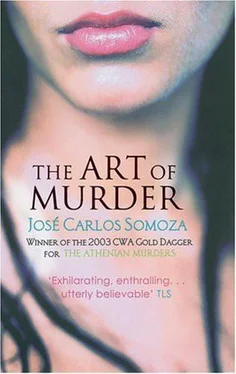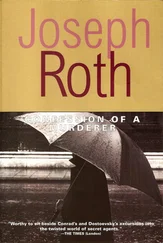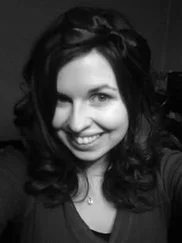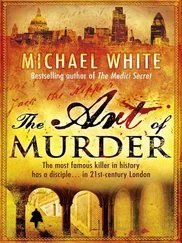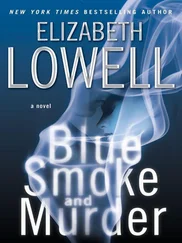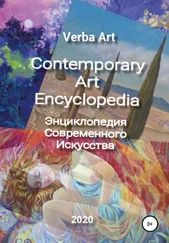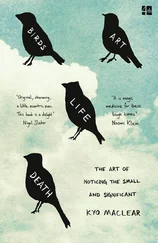Jose Somoza - Art of Murder
Здесь есть возможность читать онлайн «Jose Somoza - Art of Murder» весь текст электронной книги совершенно бесплатно (целиком полную версию без сокращений). В некоторых случаях можно слушать аудио, скачать через торрент в формате fb2 и присутствует краткое содержание. Жанр: Триллер, на английском языке. Описание произведения, (предисловие) а так же отзывы посетителей доступны на портале библиотеки ЛибКат.
- Название:Art of Murder
- Автор:
- Жанр:
- Год:неизвестен
- ISBN:нет данных
- Рейтинг книги:4 / 5. Голосов: 1
-
Избранное:Добавить в избранное
- Отзывы:
-
Ваша оценка:
- 80
- 1
- 2
- 3
- 4
- 5
Art of Murder: краткое содержание, описание и аннотация
Предлагаем к чтению аннотацию, описание, краткое содержание или предисловие (зависит от того, что написал сам автор книги «Art of Murder»). Если вы не нашли необходимую информацию о книге — напишите в комментариях, мы постараемся отыскать её.
Art of Murder — читать онлайн бесплатно полную книгу (весь текст) целиком
Ниже представлен текст книги, разбитый по страницам. Система сохранения места последней прочитанной страницы, позволяет с удобством читать онлайн бесплатно книгу «Art of Murder», без необходимости каждый раз заново искать на чём Вы остановились. Поставьте закладку, и сможете в любой момент перейти на страницу, на которой закончили чтение.
Интервал:
Закладка:
She was left to rest for a few hours and then, still exhausted, she was taken up to the fifth floor and handed over to Pedro Monfort. ‘I started in a cellar and I'm going to end up in the loft,' she thought, her brain weakened but still determined to fight back. The Monforts were brother and sister: he was very young, she was older. Their speciality was to prime thoughts (a noble enough task, surely) and yet they did not seem happy. In fact, Pedro Monfort regarded Gargallo as the real specialist. He was a badly shaven, intellectual-looking man who liked lengthy silences and stuffing his phrases with obscenities.
The only things that matter are the cunt and the prick,' he suddenly declared to a weary Clara. 'And I'm telling you that as a brain expert.' He also insisted that concentration was impossible.
'We can only concentrate by letting our attention wander. I know you canvases are taught differently in the academy, but I couldn't give a fuck about the methods you learn in academies. Just look at children while they're playing. They're completely concentrated on what they're doing. Why? Because they're making an effort to concentrate or because they're playing? Shit, it's obvious: they are concentrating because they are absorbed, because they're enjoying themselves. It's absurd for you to concentrate on quiescence. What you should be doing is enjoying yourself.'
This was his favourite word: 'Enjoy,' he kept saying as he submitted her to yet another mental test.
Marisa Monfort, middle-aged, with dyed hair and eyes buried in mascara, received the last remains of Clara on the seventh floor. Her office was gloomy, and she did not look happy either.
The backs of her hands were tattooed with two snakes, cut up into segments by innumerable yellow bangles. She pressed fingers to her temples as she spoke, as though pressing two bells. 'I'm the memory woman, my girl’ she said. 'The habits anchored in our ego that get in the way of hyperdramatic art so much.' She made Clara come into her office three times, and analysed her gestures. She was concerned by her excessive tendency to repeat the same thing. Fortunately, she did not discover any of the faults 'which ruin good material': a nervous tic, nail biting, a niggling nervous cough, other defence mechanisms. She bombarded her with imaginary situations. Showed her obscene or terrible photos. Praised her for not feeling ashamed. But she was damning over Clara's squeamishness over illegal behaviour.
'My child: to be a great work of art you have to overcome all obstacles,' Marisa Monfort reproached her in a voice like an oracle. 'You've no idea of the world you are entering. Being a masterpiece has something… inhuman about it. You have to be a lot less involved. Imagine it's a science-fiction film: art is like a being from another planet which manifests itself through us. We may paint pictures or compose music, but neither the picture nor the music belongs to us, because they are not human things. Art uses us, my child, it uses us in order to exist, but it's like an alien being. That's what you've got to think: you're not human when you are a painting. Think of yourself as an insect. A very odd insect. Think of yourself as an insect capable of flying, sucking flowers, being fecundated by a male proboscis, poisoning a child with your sting… Go on, think of yourself as that insect right now.'
Clara tried, but found it impossible to understand what the insect might be thinking.
'When you discover what the insect is thinking,' Marisa Monfort said, 'then you'll be a great work of art.'
On the eighth floor was the priming workshop. It was decorated with blown-up photos of F amp;W's past triumphs: an aquatic work by Nina Soldelli, the fabulous Kirsten Kirstenman standing in someone's salon, the amazing flame-haired female figure of Mavalaki, an outside piece by Ferrucioli on a cliff top. All of them had been primed by F amp;W. It was here that Clara finally received Friedman's icy verdict: they accepted her, with reservations. She was good material, but would have to improve. A woman with a South American accent (Clara recognised the voice – it was the woman who had stretched her on the telephone) handed her the contract. Four sheets of turquoise paper, with the letterhead 'The Bruno van Tysch Foundation, Department of Art'. Clara was so overjoyed, she could scarcely believe her eyes. The contract was for one year. The fee (five million euros) was to be paid in two instalments: half had already been put into her bank account, the rest would follow at the end. She would also receive a percentage of the sale price of the work, and of the monthly rent. There was also a comprehensive insurance and two appendices. One of these stated she would work exclusively for the Foundation; the other a commitment that she would not allow herself to be used as a fake. A third appendix required her to leave everything in the hands of the Department of Art. Art could do what it liked with her, because Art was Art. Only Art knew what it was going to do with her, but whatever that might be, she would have to accept it. The painter contracting her was from the Foundation, but she would not discover his identity until the work began. Clara signed the four sheets. 'That's crazy’ Jorge scolded her.
'You haven't the slightest idea of how this scene operates. Everything is kept a complete secret. Rembrandt, Caravaggio, Rubens and other great masters had their professional secrets, didn't they? The way they made their colours, their choice of canvas… well, modern painters have secrets, too. It stops others copying their ideas.' 'What did you do after signing?' 'I was free until the final priming session.'
That had been on Saturday. It took all day. A haircut, shower in cleaning acids, then creams applied to her body using huge rotating brushes like in a carwash, the removal of scars and other marks (including Alex Bassan's signature), the shaping and moulding of her muscles and joints with flexing agents and more creams; then the dyeing of her skin, hair, eyes, holes and cavities with the white-coloured base, followed by a thin layer of yellow paint. And finally, the labels, which showed only her name, the Foundation's logo, and a mysterious bar code.
It was Sunday 25 June, 2006, and the priming was finished. Clara was dressed in the padded top and miniskirt, driven to Barajas airport, and stored in the room. They asked her if there was anyone she wanted to say goodbye to. She chose Jorge, who was just back from a radiology congress and had heard her message.
'So there you are,' she concluded. Jorge interpreted all this from his point of view. 'Five million euros is a lot of money. You'll have no more worries.'
'You're forgetting the percentage on the sale and rent. If they make a masterpiece out of me, I can easily treble my earnings.' 'Goodness me.'
Clara's golden eyes opened wide as she smiled: two Jorges were reflected in the yellow irises. 'Art is money,' she whispered.
He stared this glowing golden apparition up and down. 'She hasn't even been painted yet, and she's already worth a fortune.' In the silence, all they could hear was the muffled distant sound of the airport's loudspeakers.
'Twenty-four thousand years,' said Jorge in a tone which made it sound as though it were negotiable, like a sum of money. 'But can an HD work last that long?'
'All you would need are twenty-four thousand substitutes, one a year. But I would go down in history as the original model.'
What about a million years? A million people, Jorge calculated. Just with the inhabitants of Madrid, at a rate of one person per year, the work could last as long as the life of mankind on Earth, including his anthropoid ancestors. Of course, it would take many generations, but what are three or four million people? All at once it seemed to him he was no longer looking at Clara: he was staring at eternity.
Читать дальшеИнтервал:
Закладка:
Похожие книги на «Art of Murder»
Представляем Вашему вниманию похожие книги на «Art of Murder» списком для выбора. Мы отобрали схожую по названию и смыслу литературу в надежде предоставить читателям больше вариантов отыскать новые, интересные, ещё непрочитанные произведения.
Обсуждение, отзывы о книге «Art of Murder» и просто собственные мнения читателей. Оставьте ваши комментарии, напишите, что Вы думаете о произведении, его смысле или главных героях. Укажите что конкретно понравилось, а что нет, и почему Вы так считаете.
